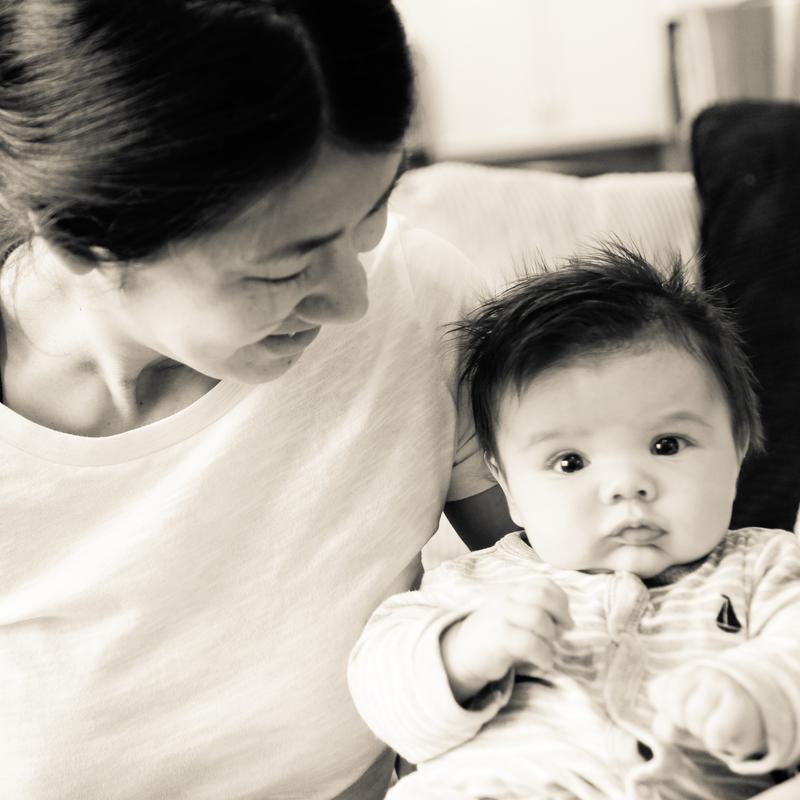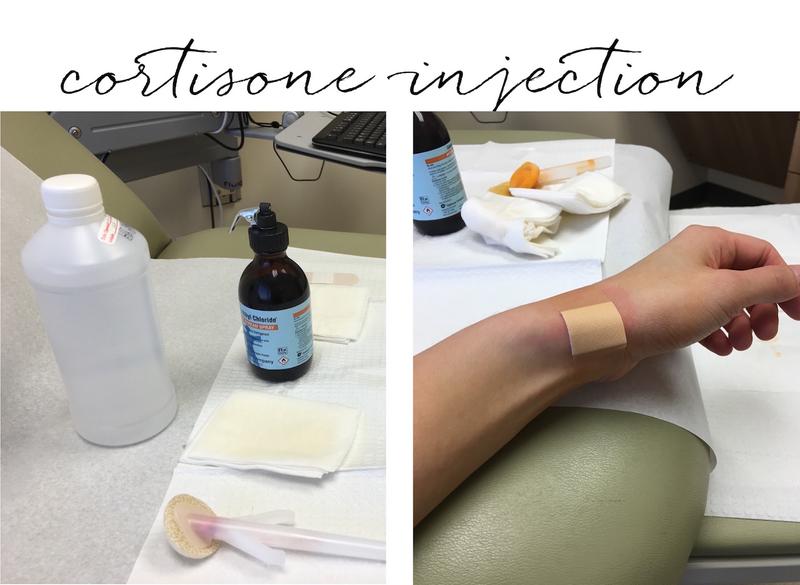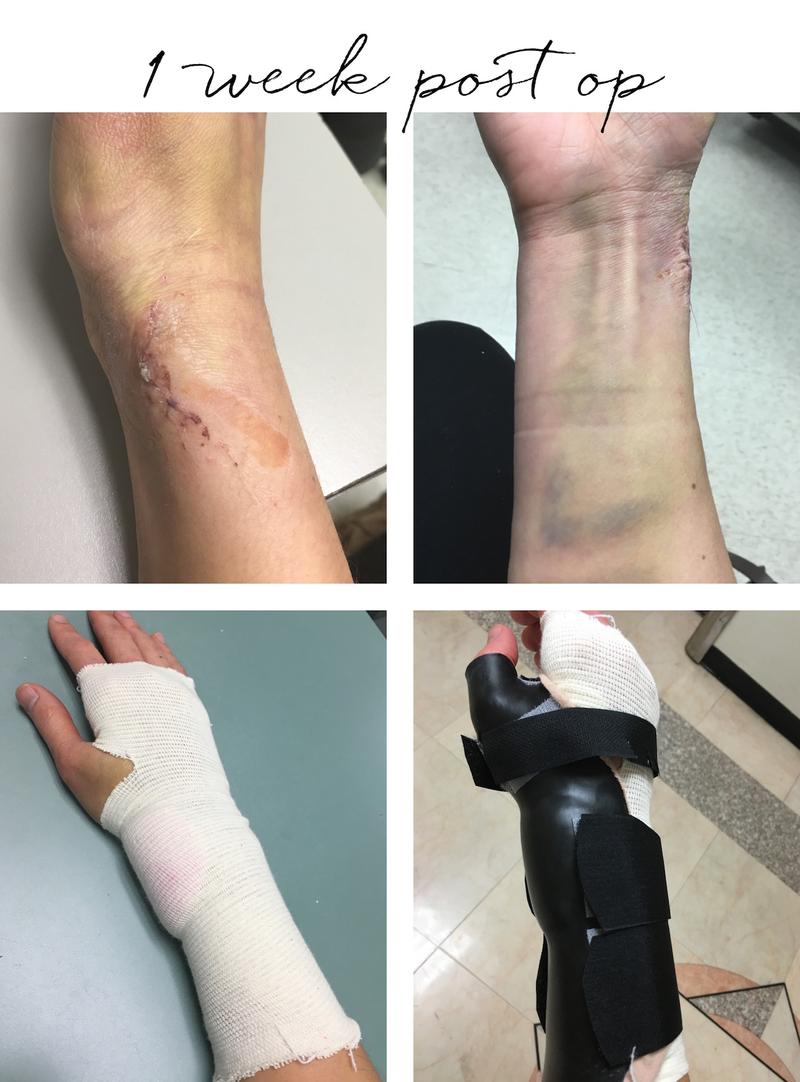When picking up your baby leads to wrist surgery

A couple months after Max was born I noticed a slight pain in my left wrist. Simple gestures such as turning a door knob or brushing my hair started to ache. Aaron and I were entering into a tough sleeping phase with Max and were exhausted so I shrugged off the pain as something that would probably go away on its own. It didn’t.
A few weeks later, the pain, which had been uncomfortable at most, started to get intense and more debilitating. I started to google “new mom wrist pain” and was flooded by search results pointing to something called “mommy’s wrist”. Technically referred to as De Quervain’s syndrome, it is inflammation of the sheath that surrounds the tendons that control movement of the thumb.
I made an appointment with a hand and wrist specialist. In the mean time, Aaron lifted Max as often as possible and I did my best to avoid using my wrist, a near impossible task. By the date of my appointment, it had been 2 months since my left wrist started to hurt and my right wrist was starting to show early signs of discomfort. My doctor examined my wrists and quickly diagnosed my condition as De Quervain’s syndrome. She explained that the treatment was a cortisone injection, which for most people is enough to cure the pain completely. When asked, she said there was nothing I could do to prevent De Quervain’s and wearing a brace would not make much of a difference when combined with a cortisone injection.

The cortisone injection hurt, but the pain was brief and relief followed immediately. Within 2 days both wrists were feeling great. However, by my 6 week follow-up appointment, the pain had come back in my right wrist. My doctor gave me a second cortisone injection and said that if the pain comes back the next step would be surgery. She explained that more than 2 shots in a 1 year period could cause permanent weakening of the wrist.
Four months later the pain in my right wrist came back and I scheduled the surgery. The procedure only took an hour, but the tough part was not being able to lift anything for 2 weeks post opt. Luckily, this was around the time when Max was starting to walk, so for the most part he didn’t want to be held.
As far as surgeries go, the recovery for this one was minimal. I wore a hulk-like cast for 1 week and was given oxycodone for the pain, which I barely needed. One week later I had an appointment with an occupational therapist where my cast was taken off and replaced with a removable hard brace fitted to my wrist. The therapist gave me a few exercises to increase my range of motion and told me to massage the scar with Vaseline a couple times a day.

During my 2 week post op follow-up, my surgeon examined my wrist and commented that she thought my range of motion would be fully restored in the next few weeks. She instructed me to take it easy and avoid heavy lifting for another 4 weeks. She explained that during the recovery period the danger was scar tissue forming on the tendon which could create pressure, inflammation and additional pain. I heeded her warning and now my wrist is completely back to normal.
For me, this experience acknowledged the way pregnancy can change your body in unwanted ways. When a little one comes into your life the focus shifts immediately to them and we don’t discuss the lasting changes pregnancy can have. From a slightly squishier midsection to feeling worn down, pregnancy is hard in so many ways.
